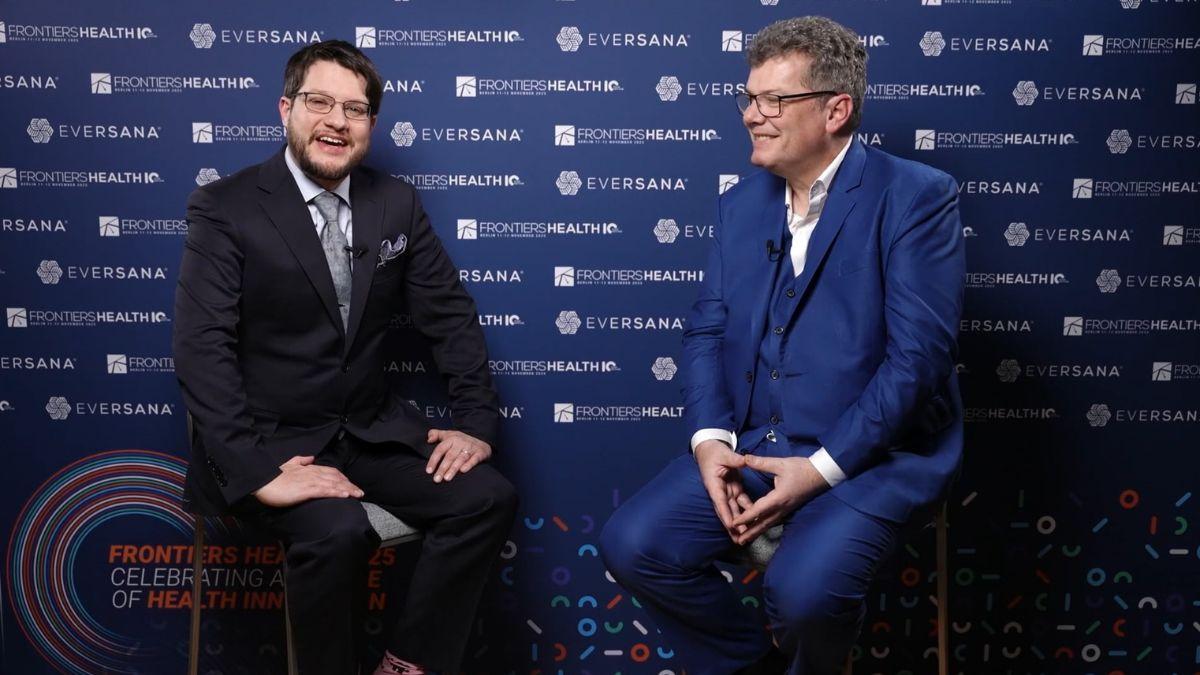Bluesky offers an opportunity pharma should not ignore

The social media landscape is shifting. As X becomes a battleground for increasingly polarised debate, its lesser-known (but strikingly similar) cousin is rapidly gaining traction.
A year on from its public launch last February, the self-described “social media as it should be” platform, Bluesky, has drawn in over 30 million unique users – including 16 million since the US election last November. Often seen as the alternative to X, many of those users planting roots on the platform are no doubt seeking a less chaotic space for more meaningful – and cordial – engagement.
As with all platforms, Bluesky is beginning to form its own distinct communities and hubs of conversation. One of the most promising of these is in healthcare. But while HCPs begin to lay their mark on the platform, pharma companies remain conspicuously absent – risking a missed opportunity to engage early with key HCPs, track trends, and test new strategies in an emerging and receptive environment.
#Medsky
The transition from X to Bluesky in the medical community gained particular early momentum when the American Society of Hematology (ASH) established a presence on the platform in November 2024. By the time the ASH Annual Meeting took place in December, thousands of healthcare professionals had joined the platform.
The San Antonio Breast Cancer Symposium (SABCS) followed just days later and, once again, the growth in online engagement was visible. The breast cancer HCP community actively used Bluesky to discuss key talks and takeaways from the event.
Stephanie Graff, MD, for example – one of the most influential online voices in oncology on X, according to Creation Healthcare research – was active in using Bluesky during SABCS 2024. Throughout the conference, she shared posts on presentations, the latest clinical trial results, and panel events. Graff now boasts more than 1,600 followers on the platform, though still shy of the 20,000 she has on X.
Around the same time, our own research at Creation Healthcare indicated that nearly one-third of the world’s top 1,000 most impactful HCPs in the breast cancer space on X had already created accounts on the platform.
While HCPs’ presence and engagement on Bluesky has continued to grow, pharmaceutical companies remain largely absent. Often mentioned in online conversations, most have still not established a presence; or they’ve created accounts, but failed to engage meaningfully. In its early stages, it seems that pharma might be missing a golden opportunity to establish itself in a space buzzing with healthcare conversation, but yet to entirely solidify its identity.
Of course, some concerns remain regarding Bluesky’s ability to replicate the levels of engagement found on X. This is perhaps partially the reason that pharma companies have not quite yet found their feet. One cancer communications expert, for example, after returning from #ASH24 and #SABCS24, said that ‘more is needed to cultivate Bluesky’, adding that dual-use of X and Bluesky among HCPs risked stifling original content and stunting the latter’s growth. A radiation oncologist responded by saying that, despite the platform’s growth, there ‘isn’t the same engagement on meeting updates.’
Bluesky does offer a certain uniqueness, though – even if X still retains its strong lead in user numbers and engagement. It provides a fresh, less-crowded environment where meaningful, uninterrupted discussions can take place. It’s structured to foster organic interactions, which makes it particularly appealing for specialty-focused conversations in medicine and science. While X thrives on scale, Bluesky offers the promise of depth; a quality that many healthcare professionals value in an increasingly noisy digital landscape.
Healthcare professionals have themselves praised Bluesky for precisely these traits. Several have labelled the platform “refreshing”, others “really positive”, and another shared that her feed was “full of genuinely interesting stuff and smart people”. “It’s joyous”, the consultant anaesthetist added.
In January, Nature published the results of a reader poll indicating that scientists and medical professionals find Bluesky “less antagonistic to science than X.”
What we found to be an even more compelling testament to Bluesky’s popularity was the presence of specific digital opinion leaders (DOLs) on the platform – the HCPs Creation Healthcare has in the past identified as playing an influential role in health conversations on X.
Take Dr Martha Gulati, who we found last year to be one of the leading US digital opinion leaders in women’s health and advocacy. On X, the cardiologist boasts an impressive 62,000 followers. On Bluesky, she has already built up a following of 4,600, and posts daily.
Or, perhaps, Dr Maryam Lustberg, who ranked among our top five women digital opinion leaders in the oncology space in previous research. On X, Dr Lustberg has just under 9,000 followers. On Bluesky, she currently has more than 2,500, posting often in relation to her specialty – breast cancer.
Clearly, some of the most active healthcare professionals online are seeing some promise in Bluesky, and have already managed – in the short time the platform has been public – to garner strong followings.
Pharma’s opportunity
The challenge for the pharmaceutical industry now is whether to observe from the sidelines or actively engage while the platform is still evolving. On Bluesky, there is an opportunity to get ahead of the curve. Engaging early would allow pharma to connect with influential healthcare professionals and digital opinion leaders before the platform becomes overly crowded. Using its insights, pharma can tailor its engagement strategies in ways that align with the needs and expectations of healthcare professionals.
Bluesky’s less formal and more community-driven environment also offers an opportunity for experimentation. Unlike X, where content must compete against a flood of real-time updates, Bluesky provides a space for deeper, more sustained conversations. It also opens the door for pharma to explore new forms of direct HCP engagement.
Listening to online healthcare conversations has always been a powerful tool for the pharmaceutical industry. The ability to track immediate reactions to newly released clinical data and recognise emerging trends is invaluable. As Bluesky continues to grow, the platform offers a fresh lens through which pharma can assess how healthcare professionals engage with medical research in real-time. With apparently less algorithmic interference than X, Bluesky offers an opportunity for pharma to observe more organic discussions, gaining unfiltered insights into the concerns, interests, and knowledge gaps within the healthcare community.
The evolution of Bluesky as a hub for medical and scientific engagement is still unfolding, but its trajectory appears promising. While X remains the dominant platform, and its well-established HCP networks offer it an edge, dissatisfaction with its current state has left many hunting for alternatives. For pharma, the question should no longer be whether Bluesky will be relevant, but how quickly they can adapt to its rise and make meaningful contributions to the discussions shaping the future of medicine and science.
About the author
 Daniel Ghinn is the founder and CEO of Creation Healthcare, which provides insights and consulting to inform health strategy, communications, and policymaking among global healthcare companies, government organisations, and NGOs.
Daniel Ghinn is the founder and CEO of Creation Healthcare, which provides insights and consulting to inform health strategy, communications, and policymaking among global healthcare companies, government organisations, and NGOs.












